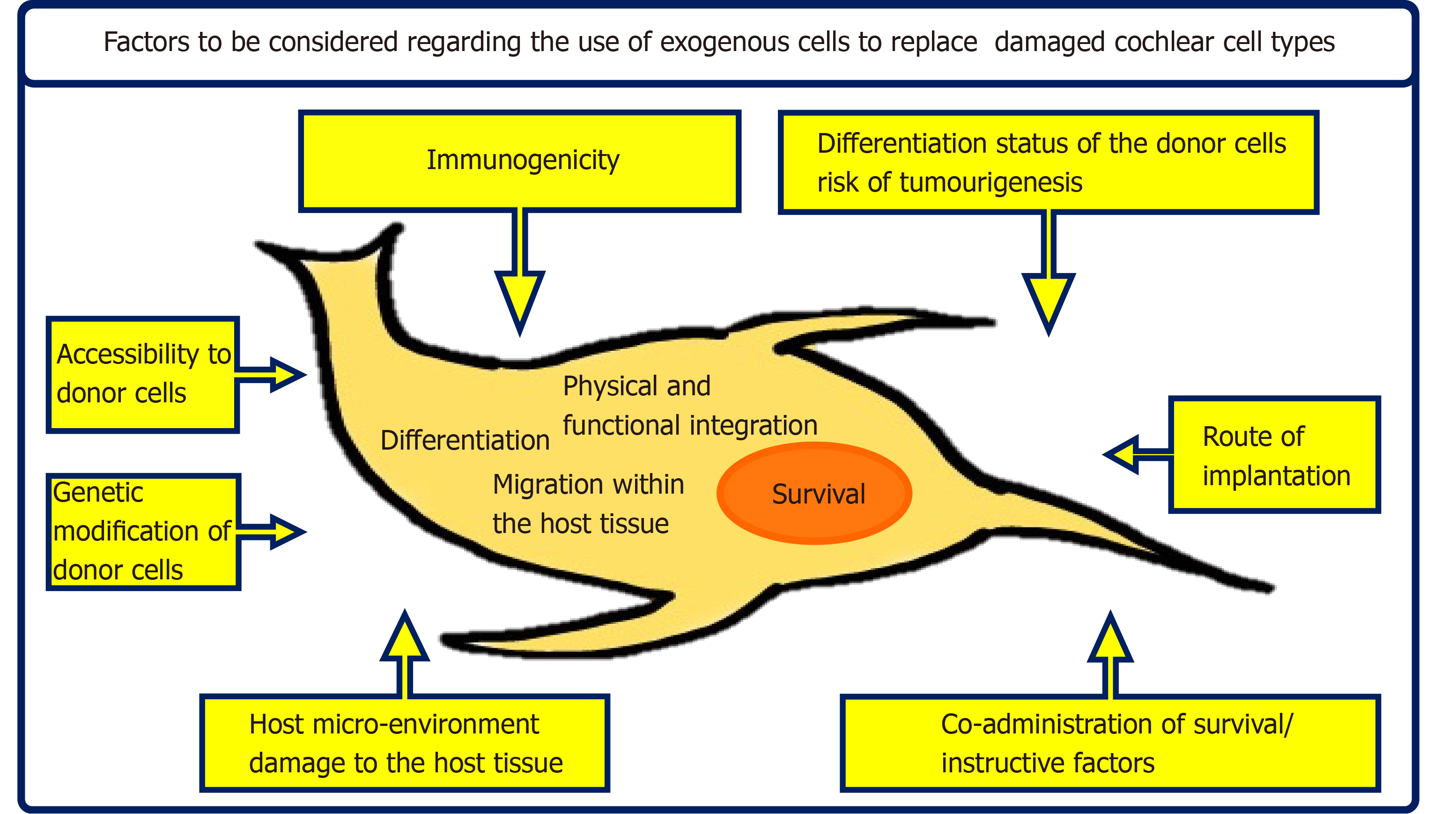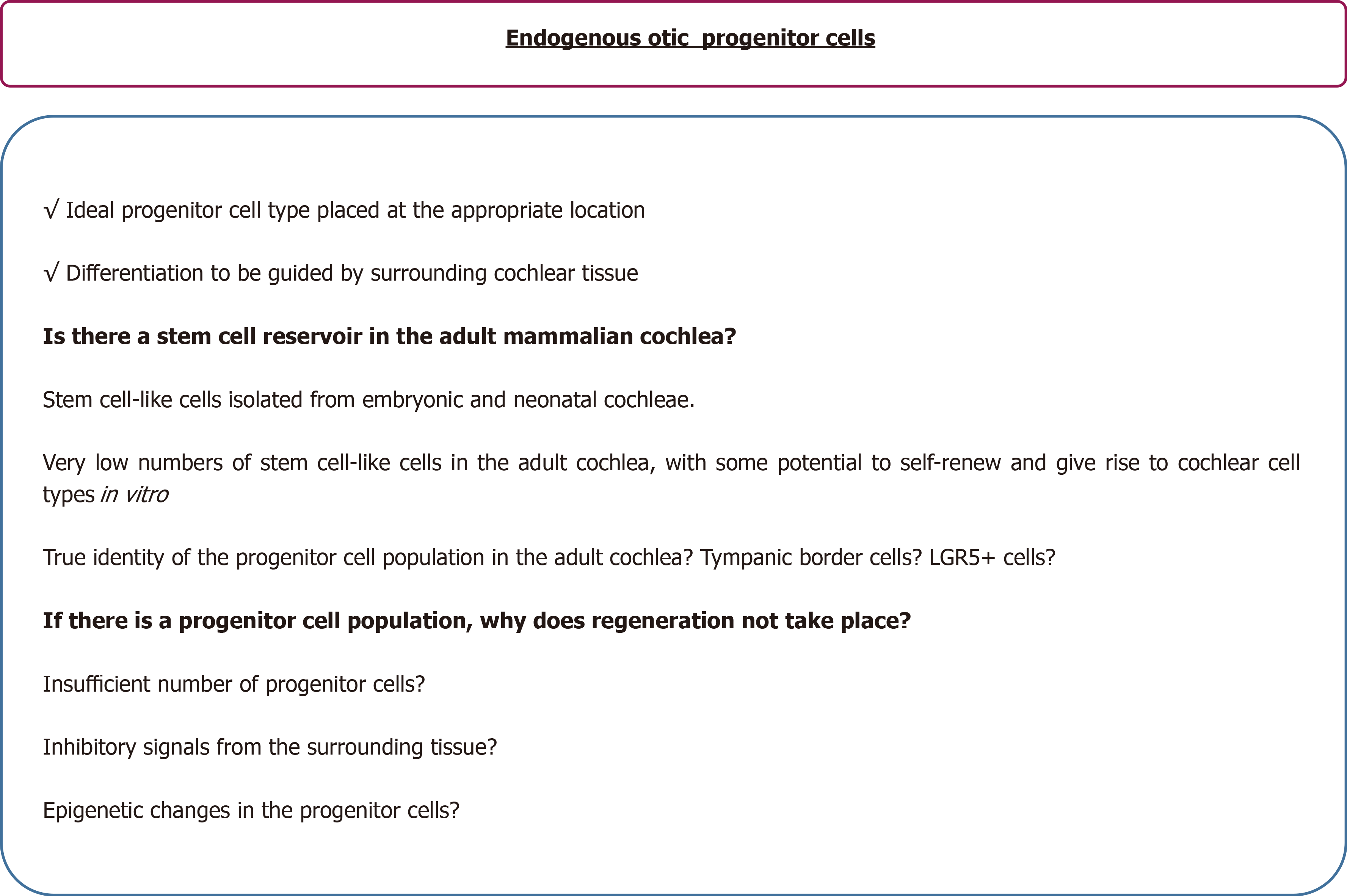Copyright
©The Author(s) 2020.
World J Stem Cells. Jun 26, 2020; 12(6): 422-437
Published online Jun 26, 2020. doi: 10.4252/wjsc.v12.i6.422
Published online Jun 26, 2020. doi: 10.4252/wjsc.v12.i6.422
Figure 1 Factors to be considered regarding the use of exogenous cells to replace damaged cochlear cell types.
The ultimate fate of implanted exogenous cells, regarding their survival, differentiation towards desired cell phenotypes, their migration to relevant locations in the cochlea and central auditory targets, and their physical and functional integration within the host tissue, strongly depends on a variety of factors such as the type of donor cell, its differentiation status and differentiation potential, the route of implantation and the host micro-environment, among others.
Figure 2 Overview of exogenous donor cell types that have been tested for their potential to give rise to hair cell- and / or spiral ganglion neuron-like cells.
Advantages and disadvantages of the various donor cell types are indicated, as well as the main results that have been obtained with these cells in in vivo and in vitro studies. HC: Hair cell; SGNs: Spiral ganglion neurons.
Figure 3 Considerations on the presence of a putative progenitor cell population in the adult mammalian cochlea.
There is yet no clear evidence that such cells are present in the adult cochlea. Some data have been obtained that support their existence; additionally, some reports point to changes in the epigenetic status of these progenitor cells and/or in the surrounding micro-environment as possible causes of their inability to activate a regenerative programme in the damaged tissue.
- Citation: Durán-Alonso MB. Stem cell-based approaches: Possible route to hearing restoration? World J Stem Cells 2020; 12(6): 422-437
- URL: https://www.wjgnet.com/1948-0210/full/v12/i6/422.htm
- DOI: https://dx.doi.org/10.4252/wjsc.v12.i6.422















